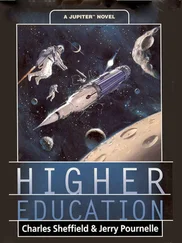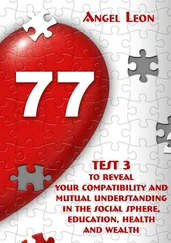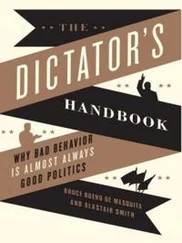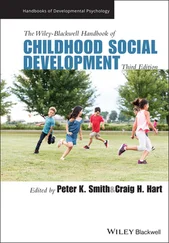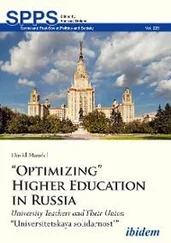One student whose academic performance is generally excellent who is always reluctant to respond and interact during the conduct of the course, performed outstandingly in this assignment.
The students learned online presentation and communication skills that will greatly help them in their career interviews and growth.
There was another important evaluation component, question‐answering, involved during the course. Generally, most of the students do not respond or interact during the delivery of the lectures and course until a constant motivational environment is created inside the class. To overcome this difficulty and to encourage all to participate, the component of question‐answering was made compulsory so that everyone could get the opportunity and exposure to be involved inside the classroom. The weighting of this component was made 5% of the maximum marks allotted in the subject for generating grading. This different type of assessment component resulted in the following measurable changes in the students:
Students who had never tried before started answering, thanks to the constant motivation and weighting of the assessment.
Students had to respond or even ask queries during the class hours.
This could help them demonstrate a few important explicitly set skills, such as participation skills, communication skills, the ability to overcome hesitancy while responding, and the conceptual approach of learning.
The students started asking questions whenever there was any ambiguity or doubt.
Thus, the level of confidence was seen to be considerably high in the maximum number of students.
3.2.2 Set of Skills Developed in CSE 5X08
A different approach to the assessment and practice of OBE‐centric components was followed in several other courses, one such being that of Image Processing (CSE 5X08). The components used in this course were almost similar to those in course ECE 3X20, except one more component was added. The components are:
1 Tests (Test‐1, Test‐2, Test‐3, mid‐term and CEs)
2 Group assignment (different approach)
3 Question‐answering and a response during the lectures
4 Problem statements for practicing in a MATLAB or PYTHON environment
The assessment of the first three was similar to that for ECE 3X20. The number of students was different; however, the assessment impact of the tools used and observable ripples in the students remained same. The pattern of attainment of various types of skill set and SLOs remained the same as that of ECE 3X20. Table 3.3shows the exact number of students in a class of 42 students who attended the course. This table presents the SLOs for each assignment component. This course also helped the students to attain programming skills since the theoretical fundamentals were practiced in a MATLAB environment.
Table 3.3 Specific SLOs of the recorded version of response to the assignment in CSE 5X08.
| SLOs |
Number of students performing at different levels |
| Average |
Excellent |
Outstanding |
Not exhibited |
| Fundamental/conceptual knowledge of the topic |
18 |
11 |
07 |
06 |
| Communication/presentation skill |
10 |
18 |
09 |
05 |
| Knowledge of mathematical concepts used |
17 |
12 |
06 |
07 |
| Critical thinking |
12 |
07 |
04 |
19 |
| Programming skill |
17 |
15 |
08 |
02 |
The programming skill assessment component was also evaluated with the help of a structured assignment of tasks. The fundamental concepts covered in the class were formulated as major problem statements to be solved using either MATLAB or PYTHON, whichever the students were more comfortable with. This could help the students in developing strong programming skills and this aspect was observed while examining the programs, their concepts, algorithms, and application.
So, the ways in which the courses were conducted and assessed, as discussed, could truly helped in assessing the attainment of SLOs in the students. The attainment of SLOs is being emphasized because they empower students and make them competent so that they can enjoy a sustainable career growth. We know that the OBE framework is of great importance in achieving sustainable goals of higher education; moreover, the SLOs and their mapping with POs and COs play an even more important role in determining if students can actually demonstrate what has been taught or delivered to them.
The SDG 4 agenda highlights objectives of sustainability in education that talk about the specific set of skills to exist in learners in the education system (Tom et al. n.d.; TWI2050 – The World in 2050 2018; Franco et al. 2019; Kioupi and Voulvoulis 2019). Major competencies that were set as learning objectives under SDG 4 are:
Critical thinking and system thinking competence
Strategic and collaboration competence
Anticipatory and strategic competence
Problem‐solving and self‐awareness competence
If the above competences are seen in context with the case studies of mapping SLOs and objectives then we find that critical thinking, problem‐solving, self‐awareness, and collaboration can be seen and measured very clearly using the tool that has been discussed in the two courses. These two were not the only courses using this approach; the same or similar schemes were adopted in many other courses and SLOs were evaluated honestly.
Another initiative, TWI2050 (The World in 2050; 2018), discusses the transformative approaches and measures that can be used to achieve SDG 4 goals for higher education. The key domains of TWI2050 are listed as:
Human capacity and demography (Franco et al. 2019): This is related to the development of human capital and associated demography with elated human resources.
Consumption and production (UNESCO 2019): This is directly associated with the economy and also indirectly impacts the area of education.
Decarburization and energy (Coughlan 2011): The impact of OBE also lies in responsibility toward nature by utilizing energy optimally.
Food, biosphere, and water (Marshall and Oxfam Education 2019).
Smart cities (Carminati et al. 2021) (Ullo and Sinha 2021).
Digital revolution (UNESCO 2016).
All the above domains are correlated with SDG 4 one way or another because education and its transformation affect all the above sectors of growth and sustainability. Human capacity and human resources at the top of the list are the most precious resource that governs all other domains because the enhanced human capital will add to every other domain of the transformation listed in the TWI2050.
3.2.3 Question Level Mapping with CEOs and COs
Mapping becomes very relevant when it is performed at the question level, as each question in the test or in any of a course's examination component will be associated with one of more specific objectives and outcomes, that is CEOs and COs, the latter being expected to be attained on completion of the course. The COs will be subset of POs of the program under which the course is offered. For example, in a course called Signal Processing (ECE 4X09), named as SP, there are number of examination components and CE is one of them. In the CE, there are the following questions:
Q1, Q2, Q4, Q5, Q7, Q9 are descriptive questions.
Q3, Q6, Q8 are objective questions.
Q10 is a numerical question.
The questions are set in such a manner that each question aims at assessing a certain SLO or CO in the student. The questions which are descriptive can have multiple parts, such as (a), (b), etc., or a single conceptual or design question. In either case, each question or part of the question must aim at assessment of a specific outcome of the student, which requires a lot of participation and effort from the teacher concerned with the course. In the course SP, if the COs articulated by the faculty are CO1, CO2, and CO3 and the objectives are CEO1, CEO2, CEO3, and CEO4, it becomes essential that each question be mapped with some CEOs, and attainment of a particular CO or multiple COs should be carefully evaluated while examining the answer book of a candidate. So, in the course SP, the following observations were reported:
Читать дальше

